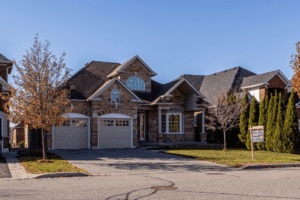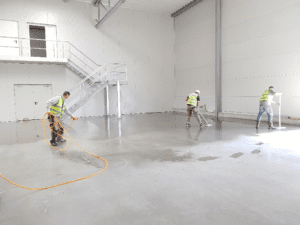Fix and flip projects refer to the purchase of old, foreclosed, or rundown properties, renovating them, and then selling them off for a better price. The industry has taken off in recent years and isn’t restricted to large corporations. What seems like a fairly simple business however has various complications. The real estate market in cities like NY is fairly competitive which only makes matters worse.
Regardless, if you focus on the fundamentals and learn from the mistakes of others, you can get a safe start in the fix and flip business. These are some of the most common pitfalls to avoid in fix and flip real estate projects:
Not Fully Understanding the Market
It’s never wise to venture into unknown territories without prior knowledge. Many real estate investors stick to investing their time and efforts into one particular kind of property and market for the majority of their career. As they fully understand the client’s needs, how these markets fluctuate over the season, and the various legalities to focus on, they prefer to operate within their confines to limit any risks.
By no means is any fix and flippers are not allowed to diversify their investments and invest in different markets. But various markets operate entirely differently, from the public perception, rent, and purchase trends as well as the various renovation factors that may differ. A single-family fix and flip job may not emphasize as heavily on the plumbing work as compared to a multifamily mixed-use property, where there’s going to be an extra load on it.
Lack of Budgeting
The key to success in fix and flip operations is budgeting. There are very few mistakes that can cost you in a fix and flip venture the way poor budgeting can. You want to make the most out of your budget, spending as little as possible while selling for the most you can. In reality, you have to spend a fair bit of money on renovations, which can fluctuate a lot depending on the condition the previous residents left it in.

Your budget will often indicate whether you should take on a project, to begin with. In some cases, a project may seem worthwhile, but when you run the numbers, you’ll observe that the return on investment is not worth the time and effort. Take your time in the planning phase and ensure that all your books coincide with the right numbers before dropping any cash on the property.
Not Following The 70% Rule
One of the key elements of a fix and flip project is staying within a comfortable margin of expenditure and profit. This way, you can ensure that any repairs you do on the property certainly help in raising its value and making it a worthwhile accommodation for buyers. And secondly, it goes for a price good enough that you’re able to profit from the time, effort, and money that went into refurnishing that property into a workable state.

Ideally, you should follow the 70% rule, which states that you only spend 70% of the amount of money that you’d get after selling the property on any repairs, maintenance, or other expenses for it. Despite being one of the most heavily followed rules in the fix and flip industry, many people still refuse to follow it for a myriad of reasons. It’s basic mathematics and is a tried and tested formula that works, so make sure you abide by it.
Poor Pricing
In some cases, all things can work out properly but setting a bad selling price can be a major mistake. It’s common for sellers to price a property too high, more so than a price too low. If it’s absurdly priced, it doesn’t matter if it’s been furnished well or whether it’s in a good neighborhood. Buyers are smarter than ever and they will immediately be aware if they’re being ripped off. You shouldn’t try to double or triple your profits from one single fix and flip project.
It’s smart to do a market analysis in the area to get an idea of how much the average property sets you back to ensure that you’re pricing it right. This is crucial to ensure you maintain a solid return on investment, lower the property holding time and move on to new projects to carry a good streak.
Not Taking Loans
One of the biggest advantages of working in the fix and flip business is that you can get started if you know how it all works. Wondering about the initial investment to purchase property, even a foreclosed or rundown one? You can reach out to various financial authorities for loans. You don’t have to take the risk of spending any of your savings or reserves and do a half-done job restoring a property.
If you’re a novice that deals in only quality, buy and hold properties, you can rely on banks to provide you with the loans for them. But if restoring rundown, foreclosed properties and bringing them into top-notch shape is your thing, you might not be able to secure loans from banks. In such cases, hard money lenders come in for the job. They’re private entities that pool money from various investors which makes them a safe option. Not only are they reliable, but they’re bound to see potential in your work and invest in it heavily.
Not Paying Attention to The Neighborhood
In some cases, it may seem that everything is perfectly right for a fix and flip case. The property is fairly affordable within your budget, according to your calculations the repair costs are within the 70% rule as well. Sounds like a perfect case that you should acquire and start working on, right? This is where things get complicated. In certain scenarios, a particular property may have potential on its own but it’s affected by the properties in its surroundings.

If other buildings aren’t in good shape, a well-maintained property sticks out like a sore thumb. Regardless of how furnished it is, the others around it can bring down its overall after repair sales value. It’s important to take a look around the neighborhood and determine if the project is worth it or not.
Underestimating a Property’s Holding Period
Another major consideration is the turnover time from when you’ve acquired the property till you’re done with renovations, and from then till you hand the keys to a new owner. The longer you hold onto a property, the lower your profit margins will become. Properties aren’t selling like hot cakes unless you’re in a very competitive market. During the tenure that you’re the owner of the property, you have to pay for all the taxes and utilities that the property costs you.
The longer it takes for you to pay back your investor, the more you’ll end up paying yourself. In reality, properties don’t exchange hands the day they look furnished again. But it’s essential to have a plan set well beforehand to reach out to potential buyers and get the property on the selling floor so that you don’t incur exorbitant carrying costs.
Poor Property Survey
Another novice mistake in the fix and flip business is not doing a proper survey of the property. The neighborhood could be lavish, the property after repair value might seem good on paper but that might change once you get around to getting the appraisal done for it. There could be some exorbitant maintenance and repair expenses that might throw off all of your calculations. Most commonly, these are related to plumbing in older homes in posh areas. There are various costs for replacing all of the fixtures, taking care of old pipes, paying for plumbing permits, and other expenses that you can’t get away with.
All of these are major factors that you might not care about but any smart property buyer or the average real estate agent will be aware of. Make sure that you have a detailed appraisal done first thing, working with a few professionals if need be.
Not Getting the Right Help
In fix and flip projects, a lot of the information that you need to know comes with experience. As you’re working under a certain budget, typically guided by the 70% rule, you’ll have to do some cost-cutting in certain departments. You’ll learn with experience where it’s safe to save up on cash and where you should be allocating more of your resources.

While you shouldn’t be hiring a novice or beginner for electrical, construction, or plumbing work, you can get away with having students or neighbors take care of menial work for a few dollars. Whatever you can DIY without having to lose a ton of cash in the event of a mistake, you should take on yourself. The rest can be allocated to professionals to ensure that you’re getting the most for your money.
Over-leveraging
A common mistake among novice fix and flippers is taking on more loans than you can handle. Many dishonest and fraudulent loan providers will often allow you larger loans that they’re aware you won’t be able to pay back to go after your assets. The larger the hard money loan amount and the longer it takes for you to pay them back, the more you end up owing the lender. The common mentality to borrowing more is the lack of prior calculation or keeping reserves in case something goes wrong.
It’s always recommended that you take as much loan as you actually need for the job and any excess might work against you. Keep the rehab project in mind and just because there’s extra finance on the table, doesn’t mean you should take it.
Not Getting a Good Contractor
When you’re looking for contractors for a project, they should be a major priority and a good part of your fix and flip budget. Going for the cheapest option possible could end up biting you later on. There’s a reason some contractors offer cheaper services, commonly requiring a quick stream of money for some other operation. Contractors are often short on cash as they take on various jobs and shuffle money between jobs to reduce some of their debts.
Just because their prices are lower than others doesn’t mean they’re not competent or trustworthy. Make sure that you can get referrals from other people, especially anyone that can confirm that they provided quality service at similar prices that they’re offering you.
Conclusion
There’s a lot that can go wrong in a fix and flip project but if you follow the basic rules, you can ensure you don’t run into the common pitfalls. It’s recommended that you take a loan instead of investing your own cash, but be aware of how much you’re taking. Have a budget and plan beforehand, including an exit strategy to ensure that you don’t take on any unplanned losses.
Take your time to do your research about the property so that no corner is left unturned. Acquire the right help and only cut corners in aspects where you can get away with it.
If you’re looking for flip loan financing options and hard money loans from private money lenders, consider working with us at Insula Capital Group. We offer real estate financing, investment home loans, hard money construction loans, commercial bridge loans, and more. Insula Capital Group has helped in the development of a variety of projects in NY, particularly for fix and flip projects.
We offer attractive hard money loan requirements to facilitate working with us and take things to the next level. Whether you’re a complete beginner or a veteran, we encourage all to bring their projects and ventures to us. Reach out to us to get started.




